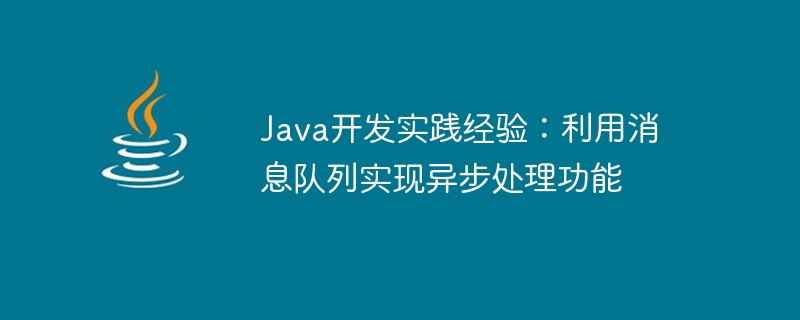

Java development practical experience: using message queues to implement asynchronous processing functions
Introduction:
In daily Java development work, we often need to deal with some time-consuming tasks operations, such as file upload, email sending, SMS notification, etc. If these operations are synchronous, the user will be unable to perform other operations before waiting for the operation to complete, thus affecting the user experience. Using message queues to implement asynchronous processing functions can solve this problem well. This article will introduce how to use message queues to implement asynchronous processing functions in Java development.
1. What is a message queue?
The message queue is a special data structure used to transfer messages between different components. It can decouple the message sender from the message receiver and provide a high-concurrency and high-reliability message delivery mechanism. Common message queues include RabbitMQ, ActiveMQ, Kafka, etc.
2. Why use message queue to implement asynchronous processing
3. How to use message queue to implement asynchronous processing
The following takes RabbitMQ as an example to introduce how to use message queue to implement asynchronous processing function in Java development.
<dependency>
<groupId>org.springframework.boot</groupId>
<artifactId>spring-boot-starter-amqp</artifactId>
</dependency>spring.rabbitmq.host=localhost spring.rabbitmq.port=5672 spring.rabbitmq.username=admin spring.rabbitmq.password=admin
@Autowired
private RabbitTemplate rabbitTemplate;
public void sendMessage(String message) {
rabbitTemplate.convertAndSend("queue.name", message);
}@RabbitListener(queues = "queue.name")
public void receiveMessage(String message) {
// 处理接收到的消息
}4. Precautions and Optimization Suggestions
Conclusion:
By using message queues to implement asynchronous processing functions, the throughput of the system can be improved, the sender and receiver can be decoupled, and the scalability and operational reliability of the system can be improved. I hope this article will be helpful to everyone in using message queues to implement asynchronous processing functions in Java development.
The above is the detailed content of Practical experience in Java development: using message queues to implement asynchronous processing functions. For more information, please follow other related articles on the PHP Chinese website!


![Getting Started with PHP Practical Development: PHP Quick Creation [Small Business Forum]](https://img.php.cn/upload/course/000/000/035/5d27fb58823dc974.jpg)

